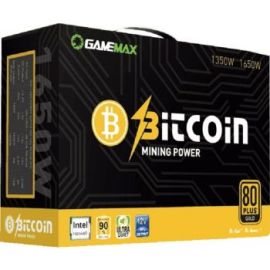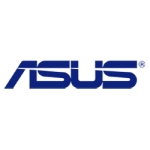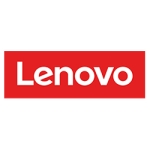Crypto Mining
Browse our list of crypto mining equipment, mining rigs, ASIC miners, gpu mining rigs, mining accessories and mining parts to suit every kind of miner anywhere in the world. It could be a home mining rig, or your staking pool, or establishing an industrial crypto mining farm, or maybe you are experimenting with altcoins mining and decentralized mining, at every step in the complex process of mining, our products provide you with the performance, efficiency and product reliability required to succeed in the busy and highly competitive mining world today.
What is Crypto Mining?
Crypto mining Mining of crypto-currencies through proof-of-work consensus in competing to solve usually cryptographic puzzles in exchange of crypto-currency award in such crypto-currency as Bitcoin, Litecoin, Monero and of course a host of altcoins. Such business involves the choice and implementation of various specialized devices that include ASIC miners and GPU mining rigs coupled with the effective mining software, cooling devices, solid mining frames and stable high power power supplies.
Important Mining Parts & Equipment
ASIC: ASICs bitcoin miners are designed application-specific and maximised in regard to the hash rate to watts ratio, enabling them to be more energy efficient than other coins (such as Bitcoin, Kaspa and Litecoin).
GPU mining rigs: They focus on the Graphical Processing Units-powered mining equipment, including the NVIDIA RTX and AMD Radeon GPUs that support algorithm flexibility to mine altcoins, interchange between coins and adapt to network requirements.
CPU and FPGA miners: These are more unpopular in the modern world but they are also viable to undertake efficient experimental projects and low power mines or algorithm-specific decentralized approach.
Mining rig structures and open air racks: Developed with the idea of airflow, maintenance of hardware, scalability and neat arrangement of multi-GPU, multi-ASIC based systems.
Power supplies/ PSUs: Power supply or power supply units need a high degree of output such as 80 PLUS Gold or Platinum to support multiple graphics cards, ASIC machines or combinations of the two.
Cooling systems: This would include air cooling, high-performance fans, liquid cooling, modular cooling loop or immersion cooling systems which will enhance thermal performance radically and make hardware last a long time.
Miner software and monitoring tools: mining software tools like NiceHash, T-Rex Miner, CGMiner, PhoenixMiner, TeamRedMiner and in-house customized solutions allow monitoring and tuning mining rigs remotely, as well as enabling overclocking, undervolting, and tuning of mining hardware.
The Innovations that are Trendy in 2025
Second-generation ASIC performance: New ASIC-based miners claim to produce over 200 TH/s with less power per hashing power, about 1520 J/TH, an improvement in crypto mining next-generation equipment performance.
Hybrid mining systems: ASIC and GPU rigs would offer coin and algorithm agile switching, which means it would be flexible, more profitable and thoughtful mining strategies.
Improved cooling and power management: Immersion cooling, direct-to-chip liquid designs and wind-powered rigs are gaining in popularity in nature-friendly mining farms.
Integration of renewable energy: There is a growing tendency to couple solar panels, wind turbines, hydro electricity solutions and back up systems to minimize energy expenditure and carbon emissions.
Edge and decentralized mining: Scale-down distributed mining systems present lower latency, local involvement, fault tolerance and more intelligent staking with blockchain nodes.
AI-optimized mining: AI technology is lowering the barriers to entry and making mining profitable again, with engineers now optimizing mining for ROI using machine learning optimization that matches energy use with changing network difficulty and varies coin selection to optimize probable profitability.
Performance Assessment to be Taken.
Hash rate (TH/s ASIC, MH/s GPUs): is the most important indicator of how fast and competitive a miner is.
Energy consumption and performance: Performance metrics such as J/TH or W/MH are used to compute costs of operation as well as long term ROI.
Upfront investment vs ROI: ASIC miners show quicker break-even timeframes, whereas GPU rigs continue to work great in terms of multi-coin adaptability and resale.
Cooling, Sound: Liquid or immersion systems absorb heat/ eliminate a lot of noise, which is necessitated by home mining or space saving systems.
Flexibility: GPU mine stations will allow cross mining of the various coins whereby ASICs will offer the highest possible efficiency but compatibility is limited.
Environmental, Energy and Other Considerations
Crypto mining is power-guzzling and is increasingly becoming a source of power consumption in the world. However, the modern mining workers are turning greener: they incorporate the use of renewable energy, use immersion cooling, and invest in green mining systems to reduce their carbon footprints. The effects upon the environment still dominate the development of mining hardware, where energy-efficient measures and renewable-energy powered systems increasingly fill mining farms in every continent.
Profiles and Use Cases
Home miners and hobbyists: These are casual miners who tend to start with small scale GPU mining rig and later develop into mid-range ASIC systems. The fact that mining can be accessed through friendly interfaces and software is the reason why new entrants can approach it.
Altcoin miners: Altoid miners: Run GPU rigs or altcoin-purposed, or altcoin-optimized ASIC to mine coins such as Kaspa, Dogecoin, Ravencoin, and others with extensive community support and varying levels of profit consideration.
Industrial data centers and industrial miners: Build liquid-cooled ASIC data centers, high efficiency mining hardware and renewable energy, and get economies of scale and institutional grade returns.
Blockchain technicians and developers: Use the best ASIC units or hybrid rigs, using real-time analytics, performance and ROI evaluations to maximize their mining facilities.
Best Hardware Products in 2025
ASIC miners that provide power of 200-335 TH/s and have energy consumption close to 16-20 J/TH suitable in large-scale mining and professional hobby miners.
Mid-range ASIC miners including a range of 100 to 200 TH/s, which were known to operate effectively at a private level / small-scale farms.
Altcoin ASIC miners tuned to algorithm such as Kaspa, competitive hash rates and performance settings.
LTC, DOGE, and other coins using Scrypt, good for stable profits and relatively easy to install as well. Scrypt ASICs.
Highest quality GPUs like NVIDIA RTX 4090, RTX 5090, AMD Radeon RX 8900 XT series the possibilities of various games and resale, the unlimited opportunities of mining since the graphics cards are multialgorithmic.
Choosing Your Mining Rigs
Select the appropriate type of hardware: ASICs have higher hash rates and limited adaptability; GPUs are quite adaptable yet slower; CPUs / FPGA can be used in niche projects or at the edges.
Compute power and cost requirements: estimate the energy bill, the cost of hardware, cooling hardware and possible revenues per coin to estimate ROI periods.
Make infrastructure choice: Home rigs, rack-mounted farms or container-based farms, even cloud mining models all come with space, cooling and scalability concerns.
Apply good cooling: Good cooling is essential to maintain hash rate and the life of the equipment, including airflow, liquid loops or box-ine systems.
Observe and tune: Overclocking, undervolting, remote monitoring and algorithm switching using mining software helps maximize daily production and ensure cost-effectiveness, also to observe performance (CPU-, GPU, etc.).
The Industry Trends Worldwide
Broadened manufacturing belts: China- assemblage of property ASICs is springing up to circumvent commercial borders, region requirements, and power-electrification patterns.
Sustainable mining regulations: Governments place a limit on energy, create quotas on renewable resources and promote carbon-neutral mining plants.
Halving cycles and network economics: Bitcoin halvings increase competition and many miners make efficiency the primary requirement of long-term survival.
Smart infrastructure and AI-assist: AI algorithms can be used to reduce the amount of downtime, and to optimise power management and rig tuning to increase insight into and profitability of operations.
Quantum resistance and future-proof cryptography: Future blockchain security requires quantum-resistant cryptography that is currently in very early stages of development and has an impact on hardware R&D product cycle.






